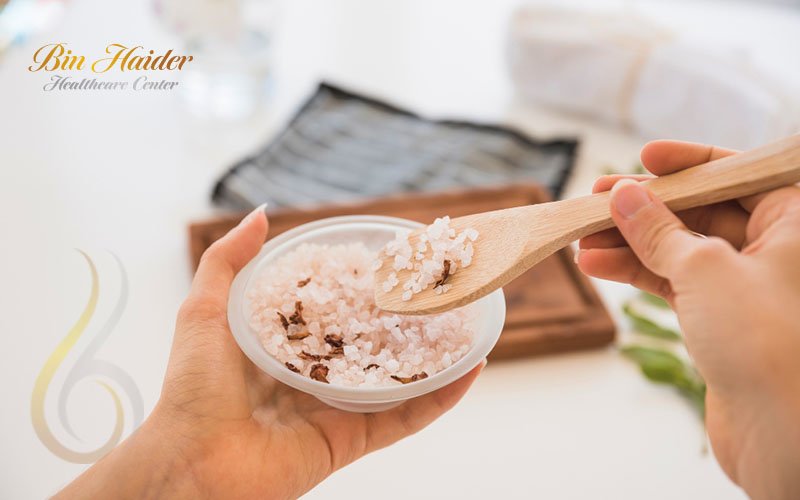Baking soda has long been a household staple, praised for everything from teeth whitening to cleaning tough stains. But in recent years, it has entered the beauty conversation in a controversial way: baking soda hair removal (myth vs fact). On social media platforms, videos claim it can “melt” or “dissolve” unwanted hair naturally, often mixing it with lemon juice, vinegar, or even coffee grounds. But does this actually work, or is it just another major myth fueled by DIY beauty culture? Let’s uncover the truth and explore both the science and the risks.
Table of Contents
ToggleHow Did the Baking Soda Hair Removal Trend Begin?
The idea of using baking soda for unwanted hair is part of a larger wave of home remedies promising easy solutions. Historically, people have tried everything from honey waxes to herbal pastes for excess hair. Baking soda, being cheap and widely available, became an attractive candidate for DIY treatments.
Advocates suggest that when applied to the skin, baking soda penetrates the hair follicles and weakens them, leading to reduced growth. Some even promote mixtures of soda hair removal with coffee grounds, claiming the texture exfoliates the skin while the soda “kills” the follicle.
Yet, no scientific evidence proves baking soda can stop hair growth at the follicle level. Instead, dermatologists repeatedly warn that these practices are part of a widespread myth with little to no effectiveness and a high potential for skin irritation.
Baking Soda Hair Removal (Myth vs Fact): What Actually Happens to the Skin?
When you apply baking soda to the skin, its alkaline properties react with natural oils and the skin’s protective barrier. This can lead to dryness, redness, and sometimes burning sensations. Far from targeting hair follicles, the mixture often just scrubs the surface.
- Myth: Baking soda “burns away” hair permanently.
- Fact: It cannot penetrate deeply enough to affect hair growth. At best, it may help exfoliate, making skin temporarily smoother.
Repeated application or long-term use can worsen skin health, leaving behind scars or dark patches. Experts emphasize that the risks outweigh any perceived benefit. And when it comes to sensitive zones—such as using baking soda for hair removal in private parts—the damage can be far more severe, leading to infections and lasting irritation.
Baking Soda for Hair Removal in Private Parts: Why It’s Risky?
Among all the DIY hacks, one of the most alarming trends is applying baking soda mixtures in intimate areas. The skin in these regions is thin, highly vascular, and easily disrupted. When exposed to harsh substances like sodium bicarbonate, the barrier function breaks down.
Some people report temporary “smoothness” after scrubbing with soda, but this is often just the result of exfoliation combined with mild chemical irritation. Dermatologists classify this as a major myth—there is no mechanism by which soda halts growth in hair follicles.
Worse still, the risk of infection rises dramatically in private parts. The area’s natural pH balance can be disrupted, causing burning sensations, yeast infections, or even chemical burns. Trying soda hair removal in these zones is not just ineffective—it’s unsafe.
Baking Soda Hair Removal Side Effects: What People Don’t Tell You?
When experimenting with beauty remedies, many people overlook the consequences. Here are the common side effects tied to baking soda hair removal (myth vs fact):
- Skin Irritation – Redness, itching, and peeling are common after application.
- Chemical Burns – Prolonged exposure may cause blisters or open sores.
- Pigmentation Issues – Dark patches can appear due to skin barrier disruption.
- Worsening of Excess Hair Issues – Since the follicle isn’t actually weakened, hair often regrows coarser after aggressive scrubbing.
- Long-Term Use Risks – Chronic irritation can leave scars or permanent skin sensitivity.
These baking soda hair removal side effects show why dermatologists classify the practice as part of a widespread myth, not a reliable solution.
Why Soda Hair Removal Became a Widespread Myth?
The internet has amplified countless beauty fads, from toothpaste on pimples to egg masks for glowing skin. In the case of soda hair removal, its popularity rests on three key factors:
- Affordability – Baking soda is cheap, leading many to believe it’s a natural alternative to costly treatments.
- DIY Appeal – Social media DIY hacks glamorize the process, often with dramatic “before and after” videos.
- Desperation for Quick Fixes – Many people frustrated with excess hair search for simple, at-home answers.
But dermatologists stress that this is a major myth. The alkaline nature of soda may exfoliate skin, but it cannot reach the root of hair follicles, where true removal happens. Unlike clinical treatments, baking soda offers no control over growth cycles.
Comparing Baking Soda Hair Removal with Clinical Options
To understand the gap between myth and fact, let’s compare baking soda methods with scientifically proven treatments:
- Baking Soda Mixtures:
- Targets only the skin surface
- Can cause skin irritation
- Provides no permanent results
- Dangerous for long-term use
- Laser Hair Removal:
- Penetrates hair follicles
- Disables regrowth effectively
- Safe for most skin types under professional care
- Long-lasting smoothness
- Electrolysis:
- Uses electrical current to permanently destroy follicles
- Approved by medical boards as the only true permanent solution
- Requires multiple sessions for best results
Clearly, comparing baking soda hair removal side effects with professional treatments highlights the dangers of the DIY route.
The Role of Coffee Grounds in Soda Hair Removal Myths
Many online recipes recommend mixing baking soda with coffee grounds. The gritty texture creates a scrub that feels like it’s “removing” hair. In reality, it only exfoliates dead skin cells, giving a temporary smooth finish.
This illusion reinforces the widespread myth of soda mixtures. However, no matter how aggressively you scrub, you’re not affecting the hair follicles beneath. In fact, this rough approach often worsens skin irritation and accelerates microtears that can lead to infection.
Dermatologists warn that while coffee grounds may be a safe exfoliant when used properly, combining them with baking soda for hair removal is both ineffective and risky.
Long-Term Use: Why You Should Avoid It?
Some DIY enthusiasts believe that persistent, long-term use of baking soda mixtures weakens hair over time. This claim is another major myth.
In practice, long exposure only weakens the skin, not the follicle. Over months, users may notice:
- Increased skin irritation
- Patchy pigmentation
- A higher risk of scarring
- No reduction in excess hair
Medical professionals stress that the only way to affect hair follicles is through scientifically proven treatments. Relying on soda pastes not only fails to work but can also make clinical treatments harder later, as damaged skin requires healing first.
Expert View: Why Baking Soda Hair Removal is a Risk, Not a Remedy?
Dermatologists across the world have classified soda hair removal as part of a widespread myth. They emphasize that:
- Baking soda cannot target or damage hair follicles.
- Its effects are limited to exfoliation and surface-level irritation.
- Risks outweigh benefits, especially for sensitive areas like private parts.
- Safe, effective options already exist in clinics.
In short, while baking soda is a powerful cleaning agent, it has no role in safe or effective beauty routines for unwanted hair.
What Should You Do If You Tried It Already?
If you’ve already experimented with baking soda, it’s important to:
- Rinse thoroughly with lukewarm water.
- Apply a soothing cream to calm skin irritation.
- Avoid repeating the process to reduce the risk of pigmentation.
- Consult a dermatologist if you notice burns or lasting discomfort.
Switching from widespread myth remedies to professional care is always the safest path.
Where to Get Safe, Professional Hair Removal in Dubai?
If you’re searching for solutions beyond myths, Dubai is home to advanced clinical treatments. Bin Haider Healthcare Center (BHHC) offers:
- Laser hair removal with cutting-edge technology is suitable for various skin types.
- Electrolysis for permanent results is approved by global medical boards.
- Professional care that eliminates risks of DIY methods like baking soda.
- Personalized plans addressing sensitive areas, ensuring comfort and safety.
At BHHC, every treatment is conducted by licensed professionals who prioritize safety and long-term results.
The truth is clear: baking soda hair removal (myth vs fact) falls heavily on the myth side. While it may exfoliate, it does not target hair follicles or reduce excess hair effectively. Worse still, it carries risks of skin irritation, pigmentation, and long-term damage. Mixing it with coffee grounds or applying it to private parts only amplifies the danger.
Instead of risking your skin on a widespread myth, consider proven clinical options. If you’re in Dubai, visit BHHC for expert guidance and professional treatments that deliver real, lasting results.
Take the first step today—book your consultation at Bin Haider Healthcare Center and experience hair removal backed by science, not myths.
Does baking soda really remove hair permanently?
No. Baking soda cannot target or destroy hair follicles. It only exfoliates the skin’s surface, making it part of a widespread myth, not a proven method of permanent hair removal.
Is baking soda safe for hair removal in private parts?
Using baking soda for hair removal in the private parts is risky. It can disrupt the skin’s pH balance, cause irritation, and even chemical burns, especially in sensitive zones.
What are the common side effects of soda hair removal?
Baking soda hair removal side effects include redness, skin irritation, pigmentation changes, and long-term sensitivity. These risks outweigh any temporary smoothness.
Why do some people mix baking soda with coffee grounds for hair removal?
Coffee grounds add exfoliation, giving the illusion of smoother skin. But neither coffee nor baking soda affects hair follicles, making this combination ineffective for actual hair removal.
What is a safe alternative to DIY baking soda hair removal?
Professional treatments like laser hair removal or electrolysis at licensed clinics, such as Bin Haider Healthcare Center (BHHC) in Dubai, are safe and effective solutions for unwanted hair.



